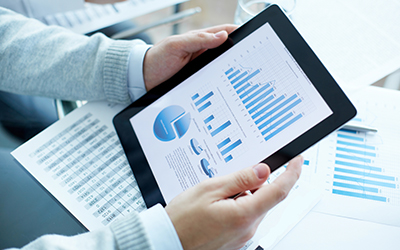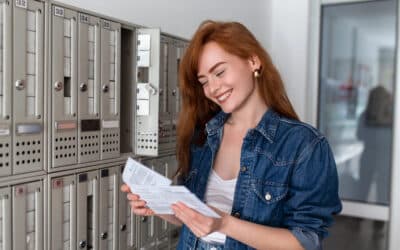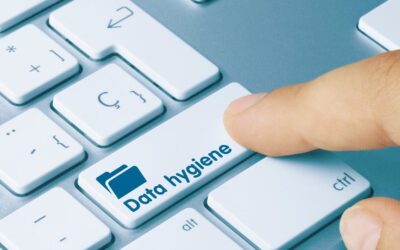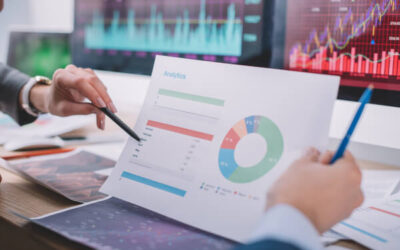Your nonprofit just wrapped up an inspiring fundraising gala. You hit your fundraising goal through a successful silent auction and ended the night by asking supporters to fill out a post-event survey about how the event went and their interests in your organization. Now you have a wealth of information about your supporters. But what do you do with it?
Event data allows you to improve future events and make them more enjoyable for supporters. However, there are many other valuable ways you can use this information.
Most importantly, you can use your data to strategically support your donor stewardship efforts and fundraising goals.
Let’s take a look at four top strategies for leveraging event data to maximize donor outreach and facilitate stronger relationships with your supporters.
Collect comprehensive data
Before we review how to leverage your data to increase your reach, let’s make sure you know what data you should collect during your next fundraising event. Ideally, you should approach data collection comprehensively, storing the following information about event attendees:
- Basic details, including full name and contact information
- Demographics
- Donation amounts
- Engagement levels
- Communication preferences
- Philanthropic interests
This information will provide valuable insights into your donors’ interests and behaviors. For instance, you might learn or infer that the majority of your last event’s attendees prefer to receive email messages. In the future, you’ll know to place more emphasis on your email marketing strategy for events.
Additionally, make sure you’re working with dedicated fundraising software to easily collect this information and, ideally automatically, report it to your CRM. The right solution will also help you keep event data clean, ensuring you’re always working with up-to-date and accurate information.
Segment your donor database
After collecting your event data, use it to segment your donor database into groups that will be helpful for your future donor stewardship and fundraising efforts. Common segmentation criteria include:
- Demographics. This includes age, gender, income level, education level, geographic information, marital status, parental status, and more. Tracking demographics allows you to pinpoint your events’ target audiences more closely, leading to more personalized invitations that recipients are more likely to accept.
- Donation history. Knowing a supporter’s donation history helps you determine which stage of the donor journey they’re in, allowing you to perform lifecycle segmentation. Plus, you can also segment them based on gift size and frequency, marking them as small, mid-sized, major, or recurring donors.
- Event attendance. Tracking this information provides insight into your supporters’ engagement level and event preferences. For instance, maybe your supporters prefer casual dinners or meal-centric events to high-end affairs like galas.
- Interests. With information about a donor’s interests, you can send them messages about programs they’re more likely to support. For example, an animal shelter nonprofit might segment supporters by the type of animal they are most connected to (dog/cat) and send them donation requests for programs dedicated to that specific animal type.
By segmenting your donor database, you can more efficiently tailor your outreach efforts and messages to specific donors. This practice results in greater engagement with your nonprofit’s mission and fundraising efforts.
Personalize your communications
Using your event data and donor segments, you can begin personalizing your communications with donors. Start by sending messages tailored to each segment to pique their interest. This might look like inviting them to unique fundraising events that align with their interests (check out the OneCause list of event ideas if you need inspiration!) or communicating with them via their preferred channel, such as email, text message, or direct mail.
Once you’re comfortable implementing segmented communications, you can personalize your messages further by referencing the recipient’s specific and unique interactions with your nonprofit, such as their past event attendance, interests, or donation history. This practice shows that you value their support and engagement with your nonprofit.
Additionally, after each event, send targeted follow-up emails to attendees based on their level of engagement and interests. Thank them for their attendance and send additional information or opportunities related to the specific event they attended.
For instance, a quick after-event message from an environmental conservation nonprofit might look like this:
Hello Amanda! We at Greenleaf Conservation want to thank you for attending our “Save the Earth” walk-a-thon and for your generous contribution of $50. It’s with the help of passionate individuals such as yourself that we’re able to do our environmental conservation work!
Since you enjoyed participating in our walk-a-thon, we’re inviting you to take part in our upcoming “Muddy-Mangrove Marathon.” Proceeds from this event will go toward the conservation of mangrove forests in southern Florida. Click on the link below to learn more and RSVP. We hope to see you there!
This message is extremely effective as it shows appreciation for the donor and encourages them to continue engaging with your nonprofit. They may even feel inspired to navigate to your donation page and make another contribution!
Invite donors to future events
By collecting event data, you can identify donors who have attended multiple events or shown a high level of engagement with your nonprofit. Invite these donors to future events, since they’ve demonstrated an interest in supporting your cause and will likely accept your invitations.
In particular, if they’ve demonstrated a preference for certain types of events, take the opportunity to invite them to those affairs. Common nonprofit event types include:
- Galas
- Auctions
- Run, walk, and ride events
- Conferences
- Workshops
- Volunteer days
Additionally, use your data to infer which donor segments prefer certain types of events, allowing you to preemptively send invitations to those segments. For instance, major donors may prefer gala-style and networking events. When you recruit a new major donor, you can thank them for their gift and invite them to your upcoming annual gala. Or, if your mid-sized donors enjoy auctions, be sure to highlight your auctions in any future events within your communications to them.
Additionally, Aly Sterling’s donor stewardship guide recommends hosting donor appreciation events to deepen engagement and steward donors. Based on your data, you can invite donors in the area to these events, especially those who have a preference for networking or social gatherings. It’s a win-win: You’ll further engage donors in your mission and show them you value their continued support.
Event data provides a valuable opportunity to develop relationships with donors and maximize your fundraising efficiency. To support your strategic use of this information, make sure you have fundraising technology that enables you to collect data and leverage it successfully. The right solution will make it easier than ever for your nonprofit to meet your goals and work toward your mission.












0 Comments